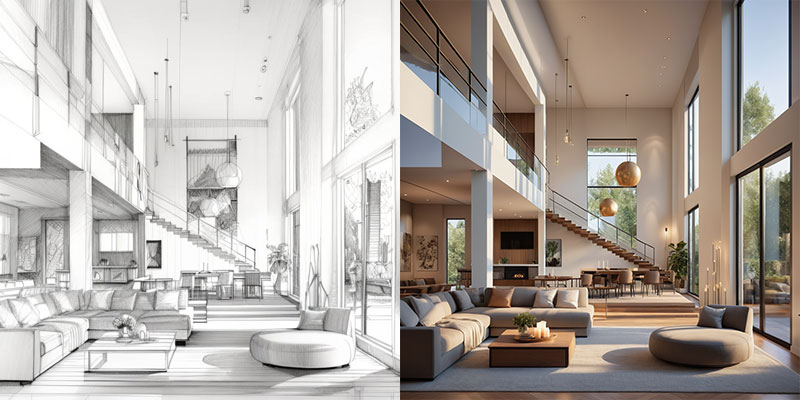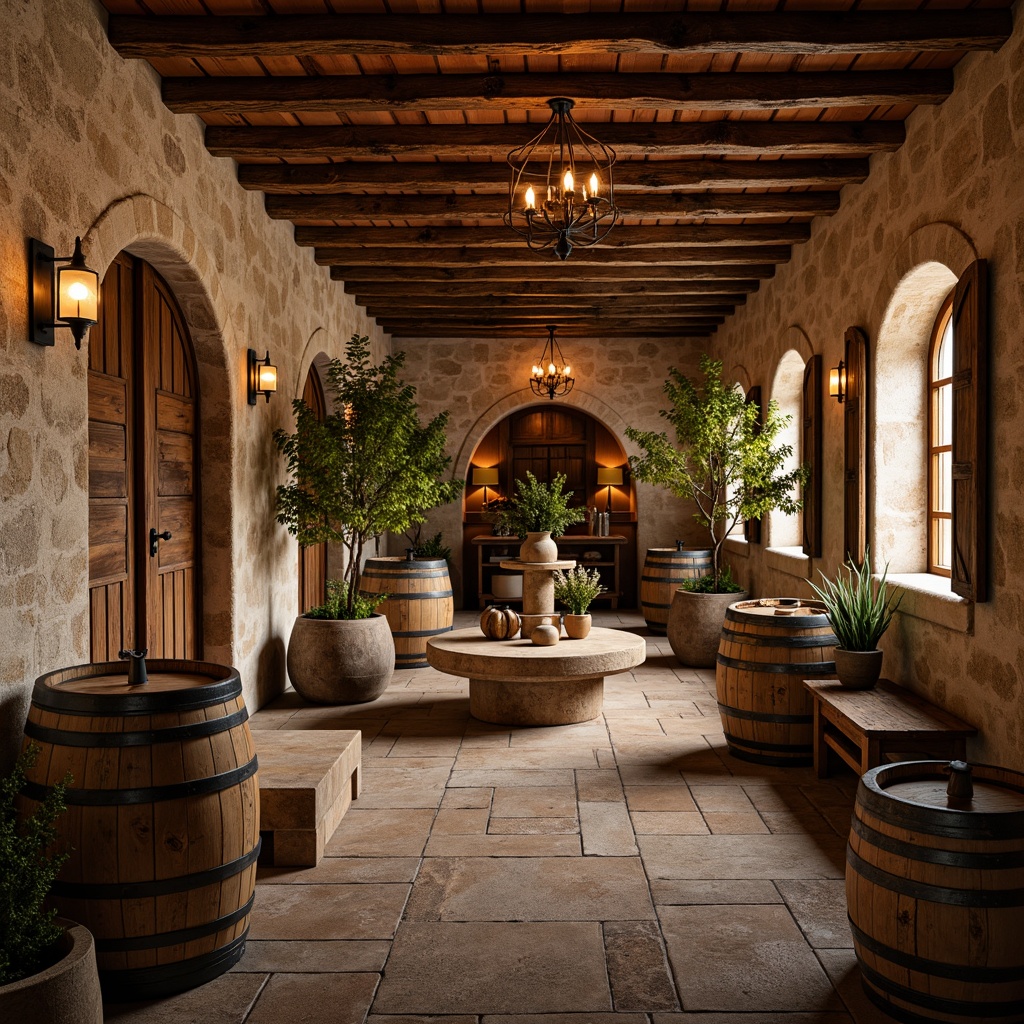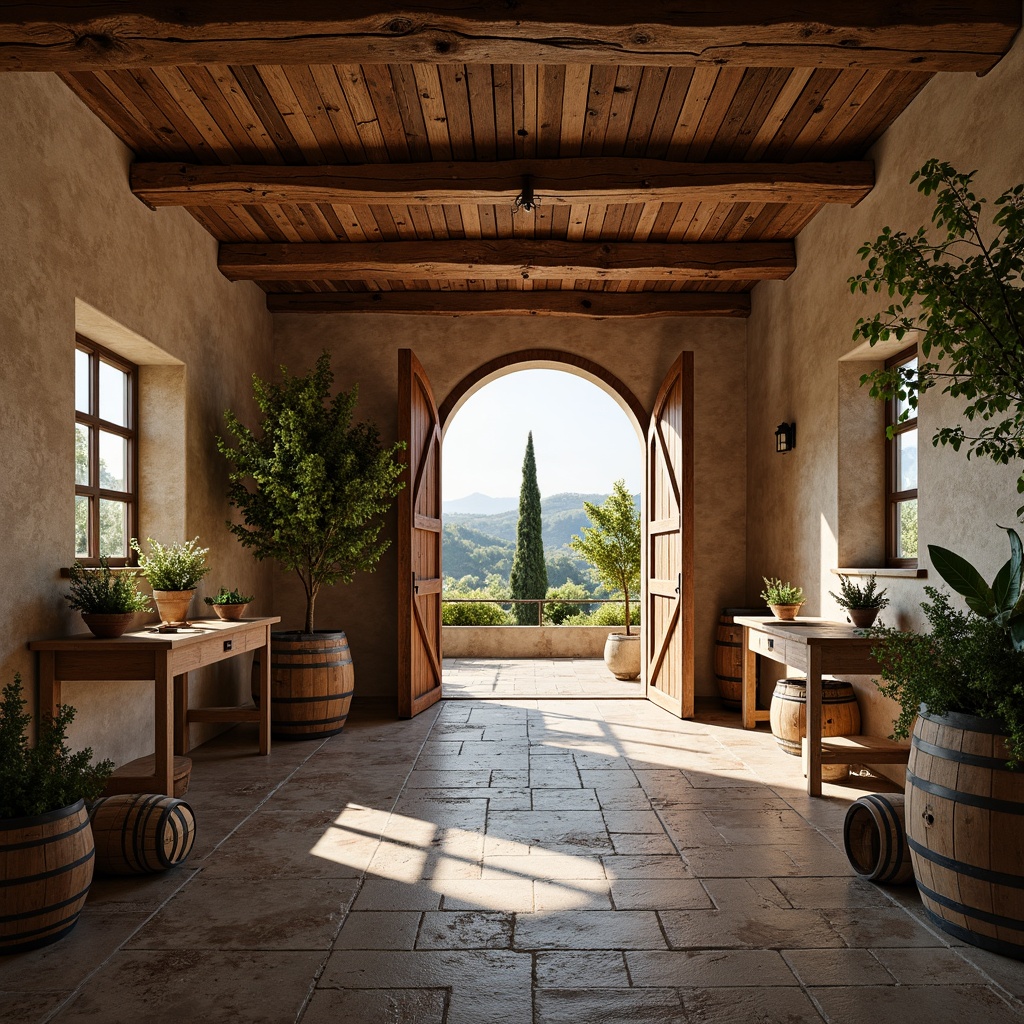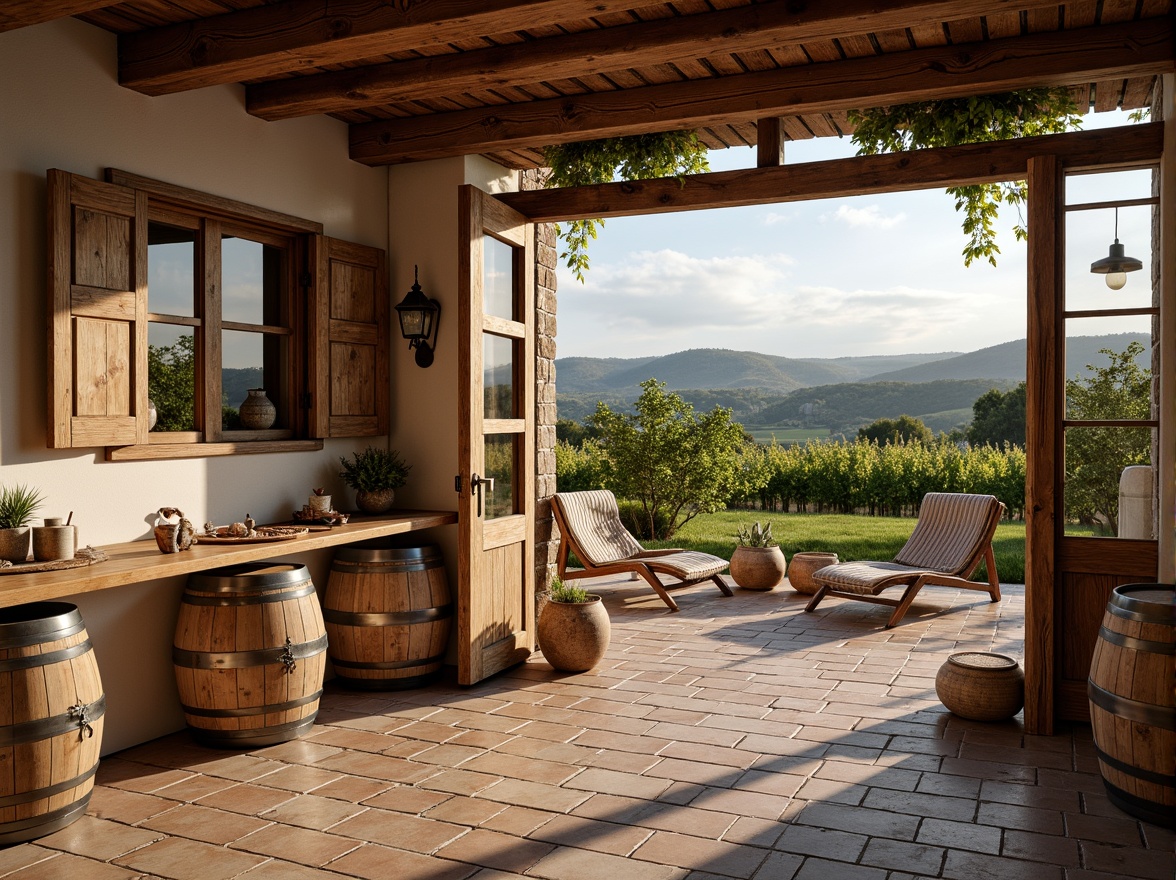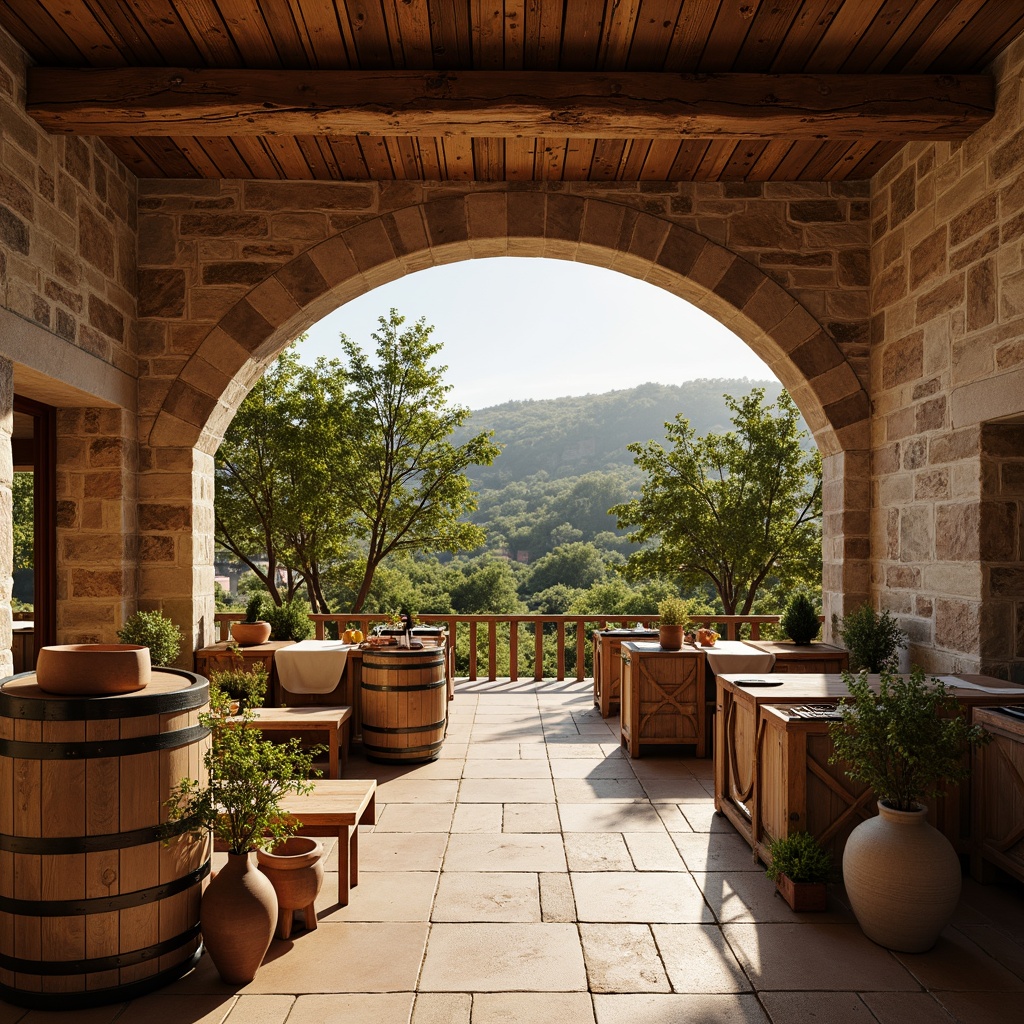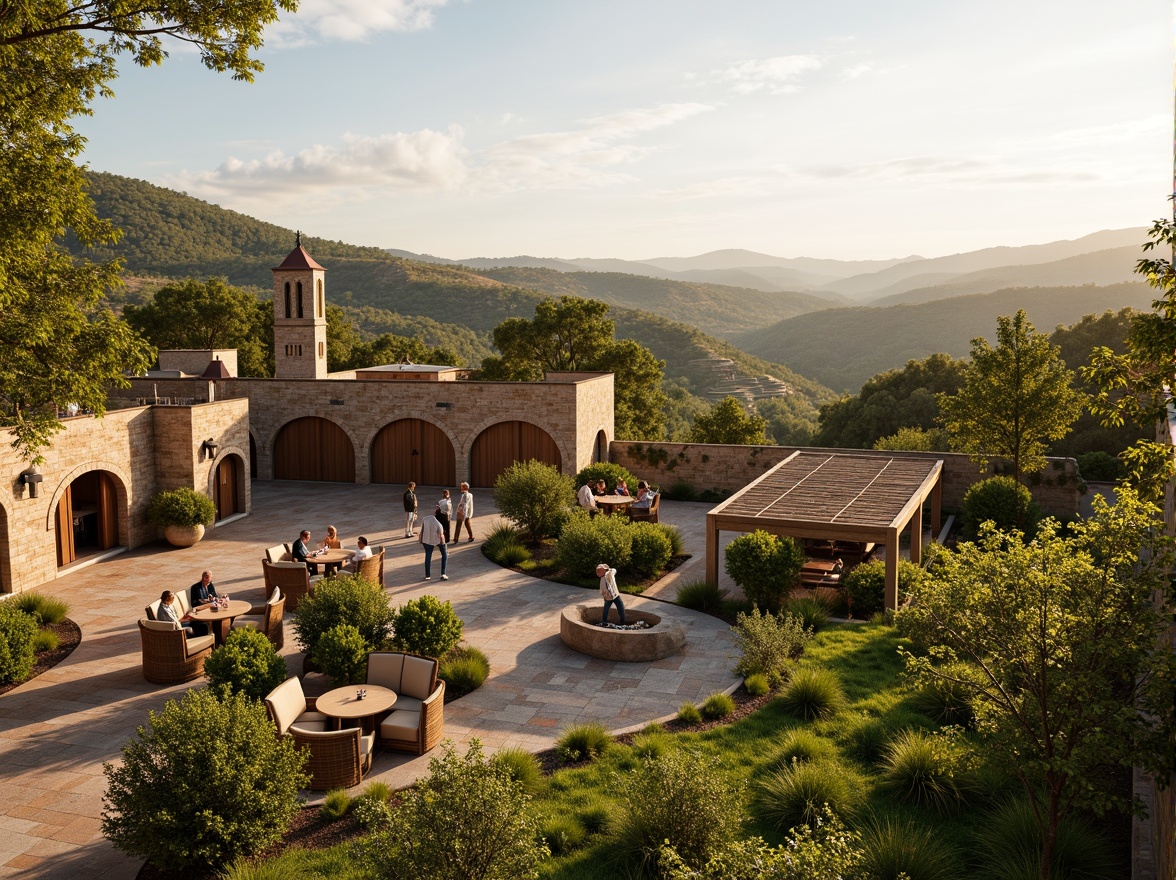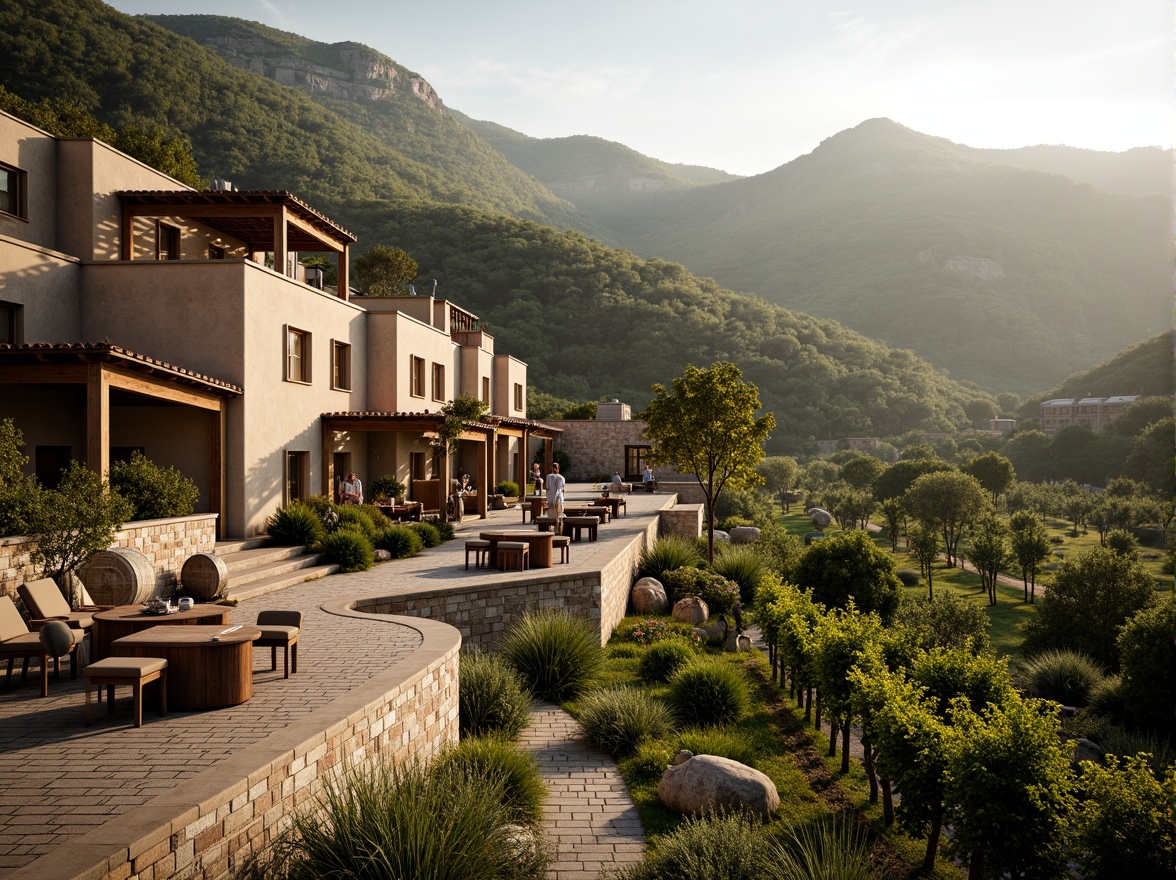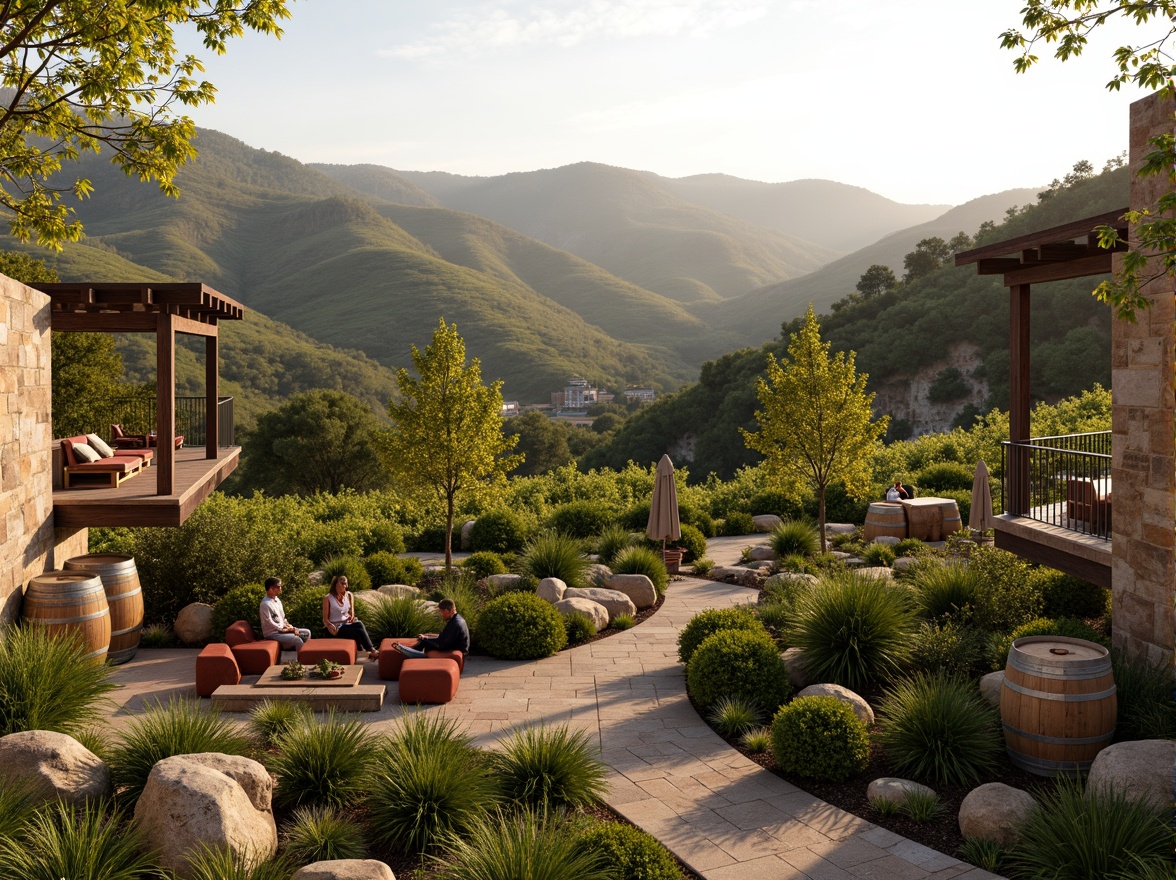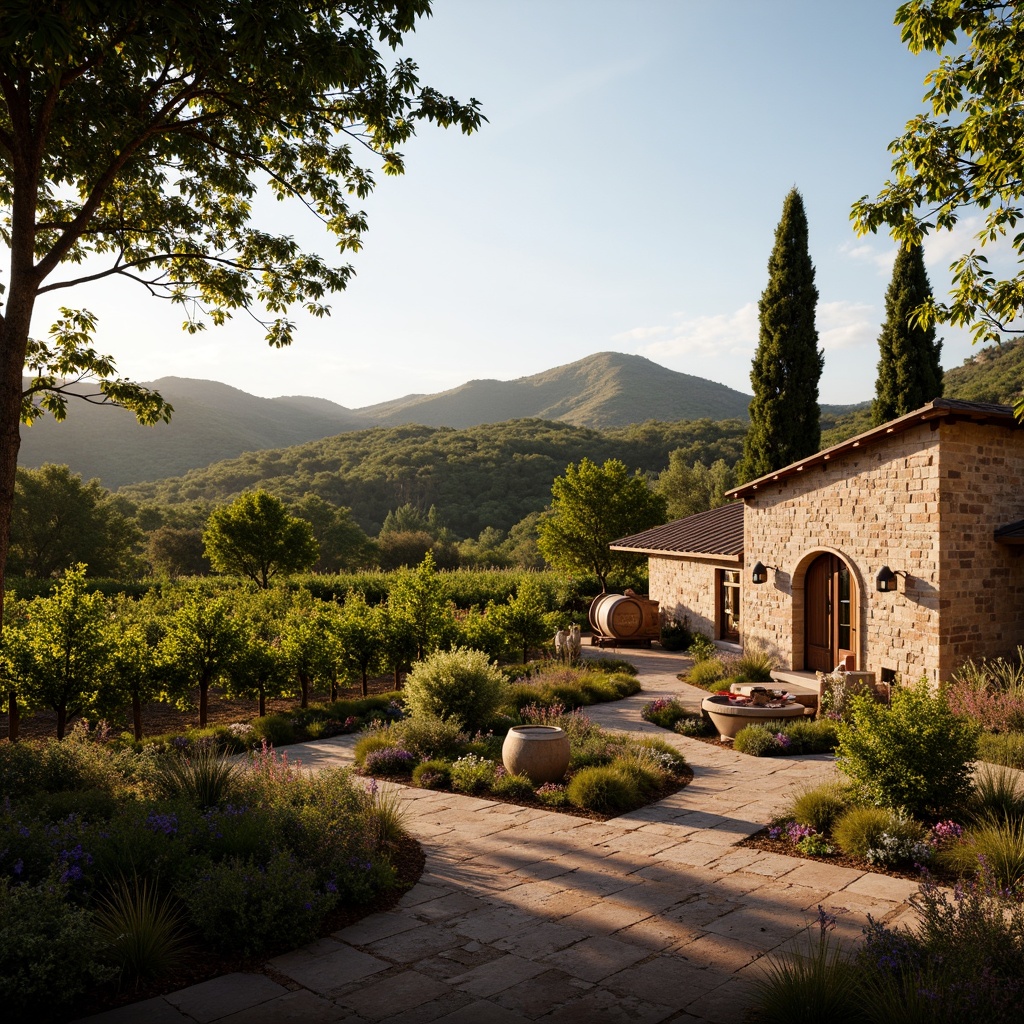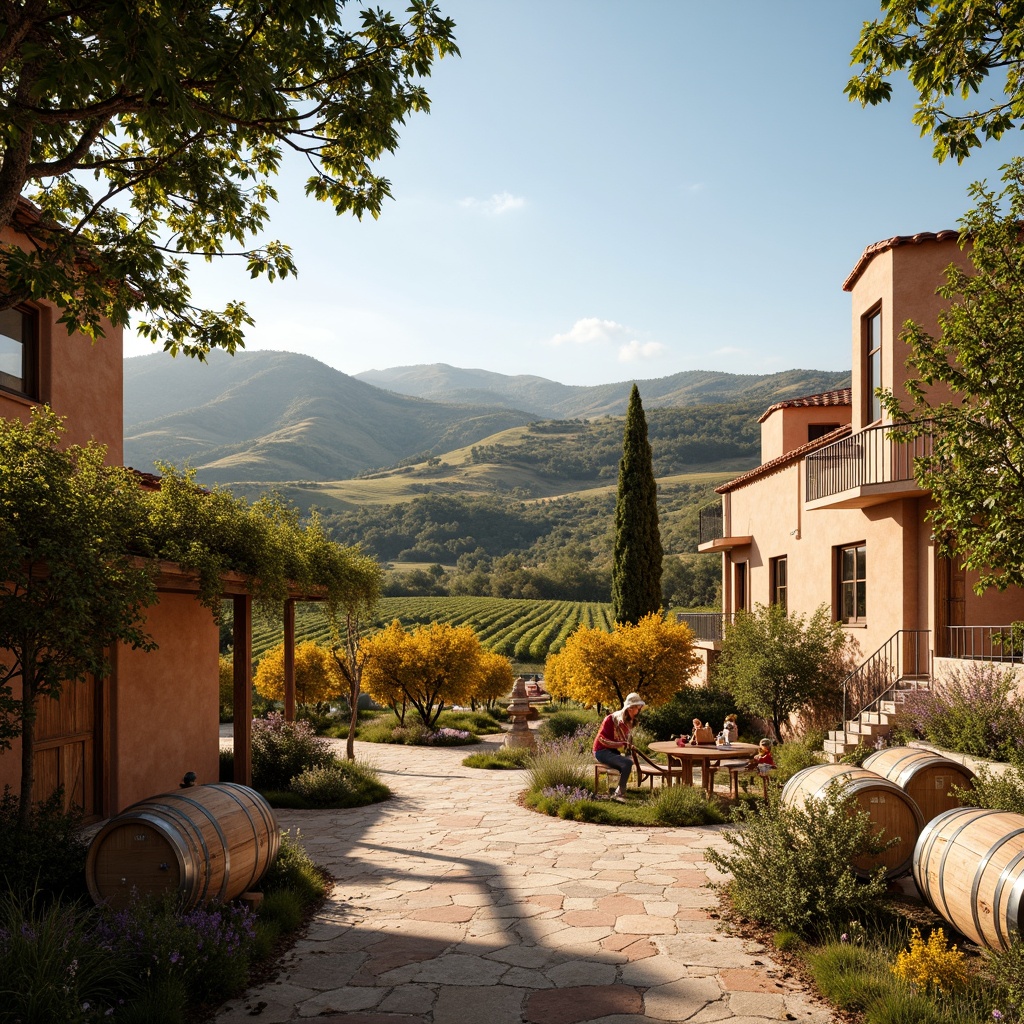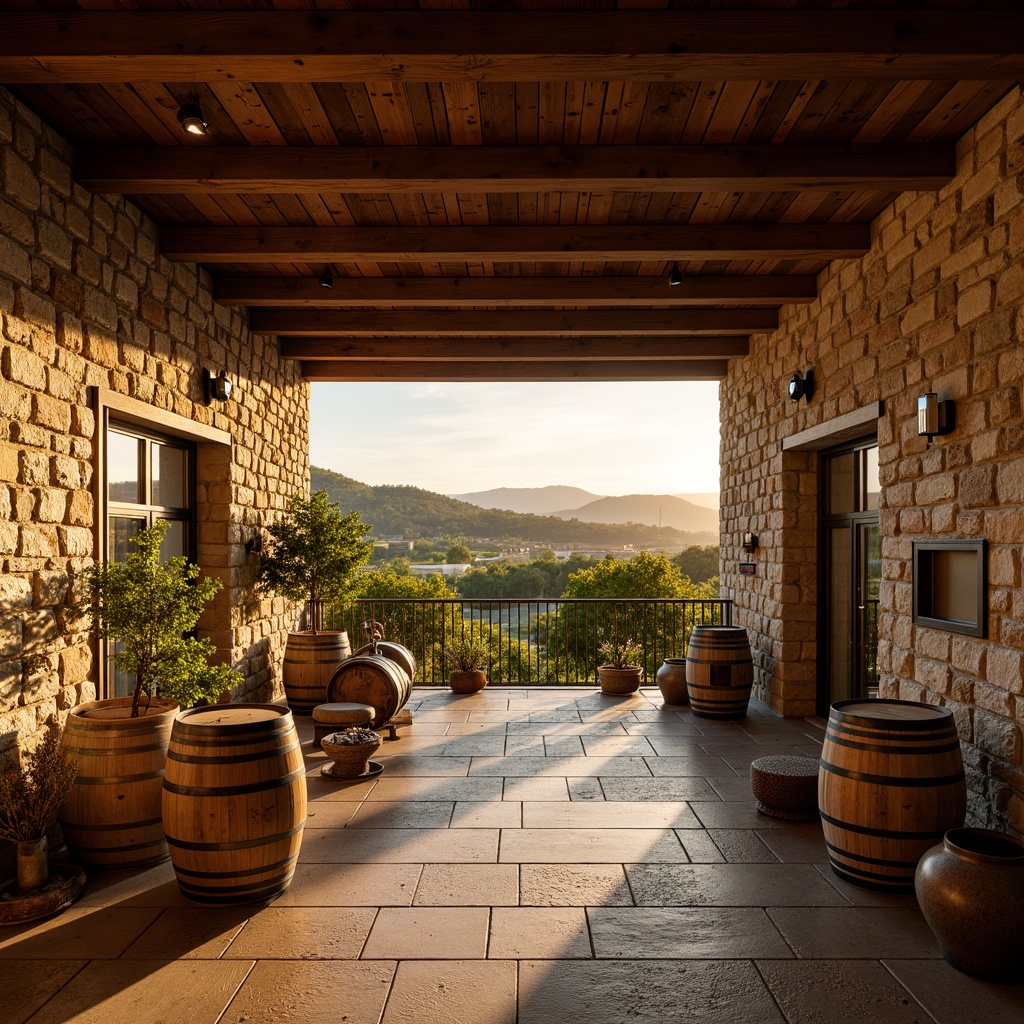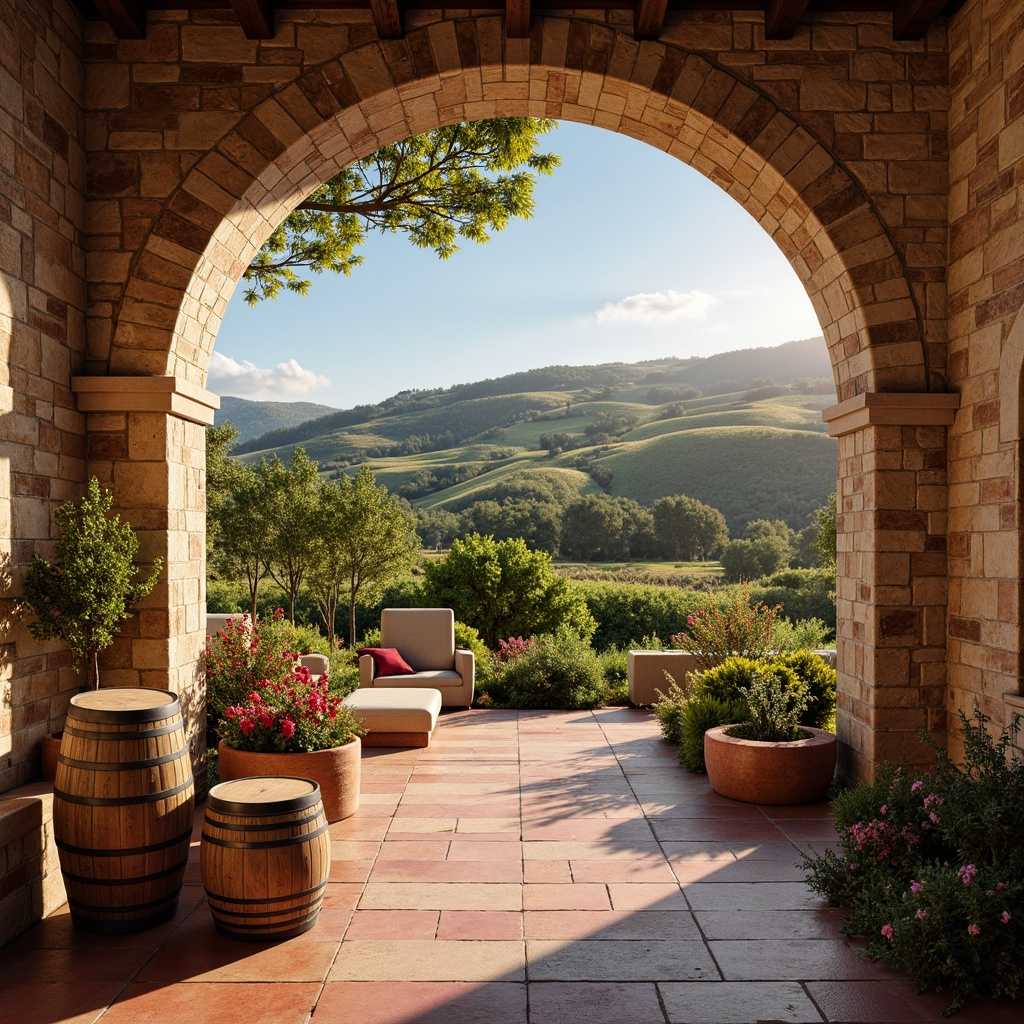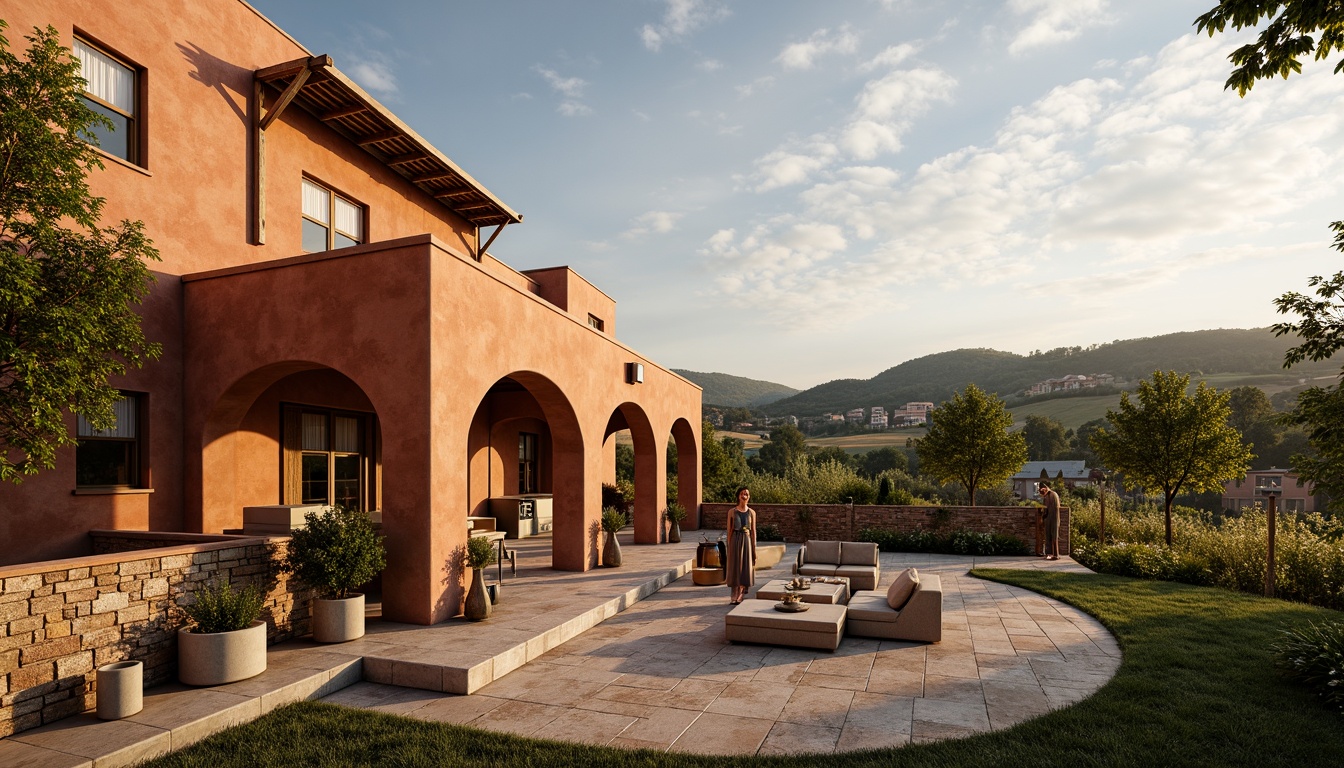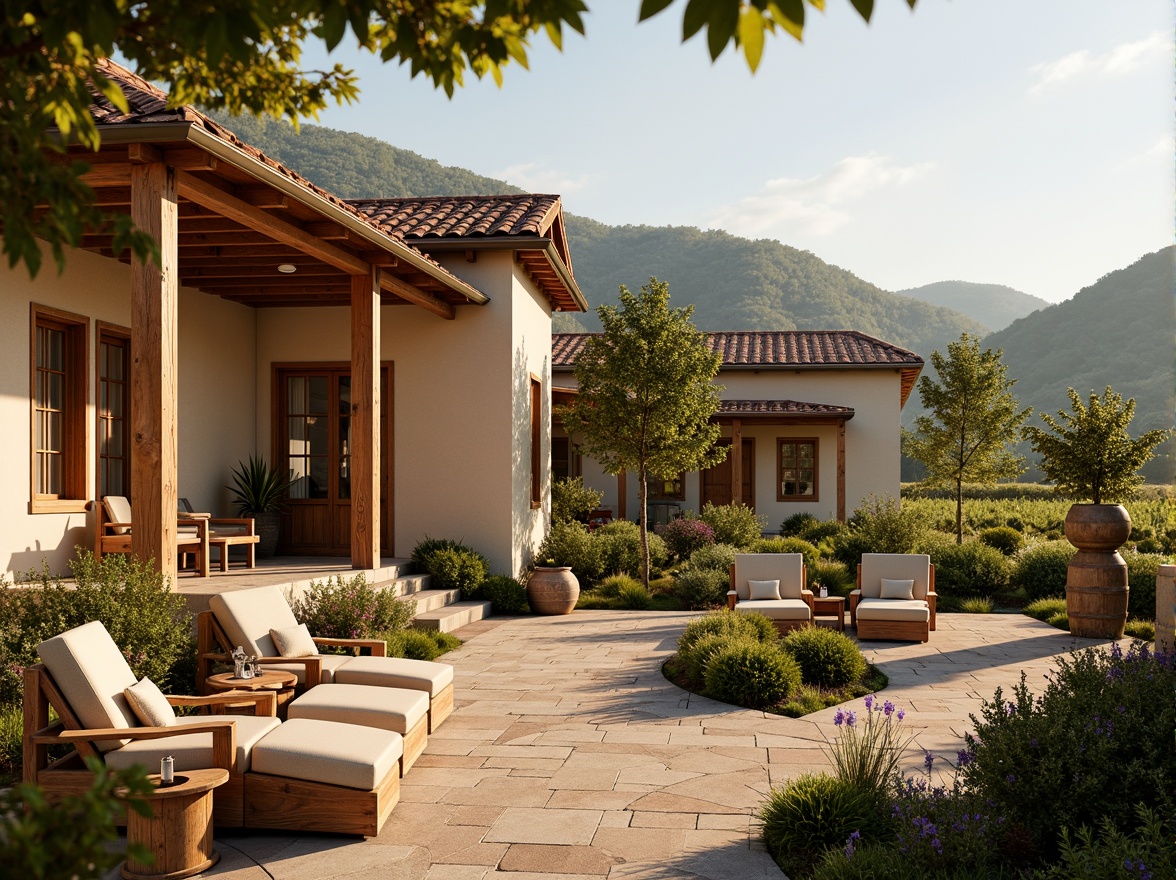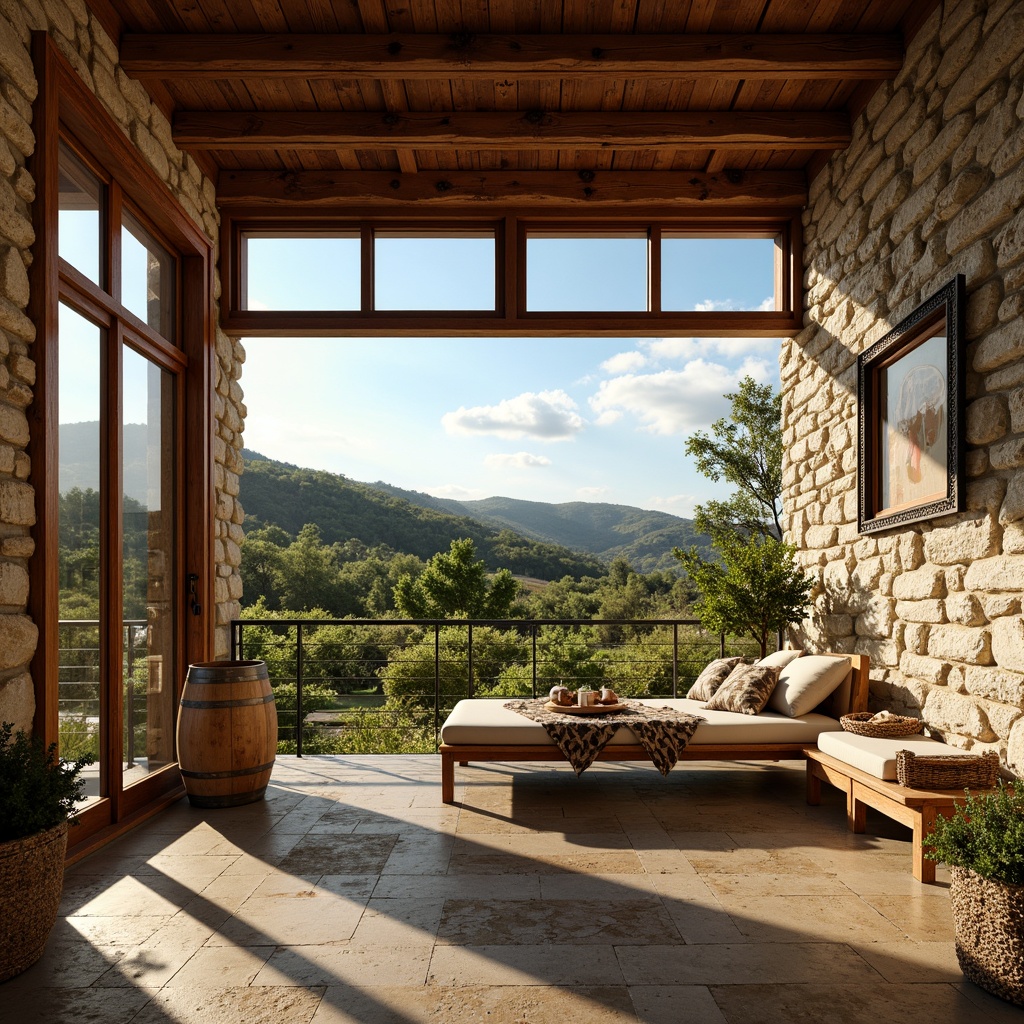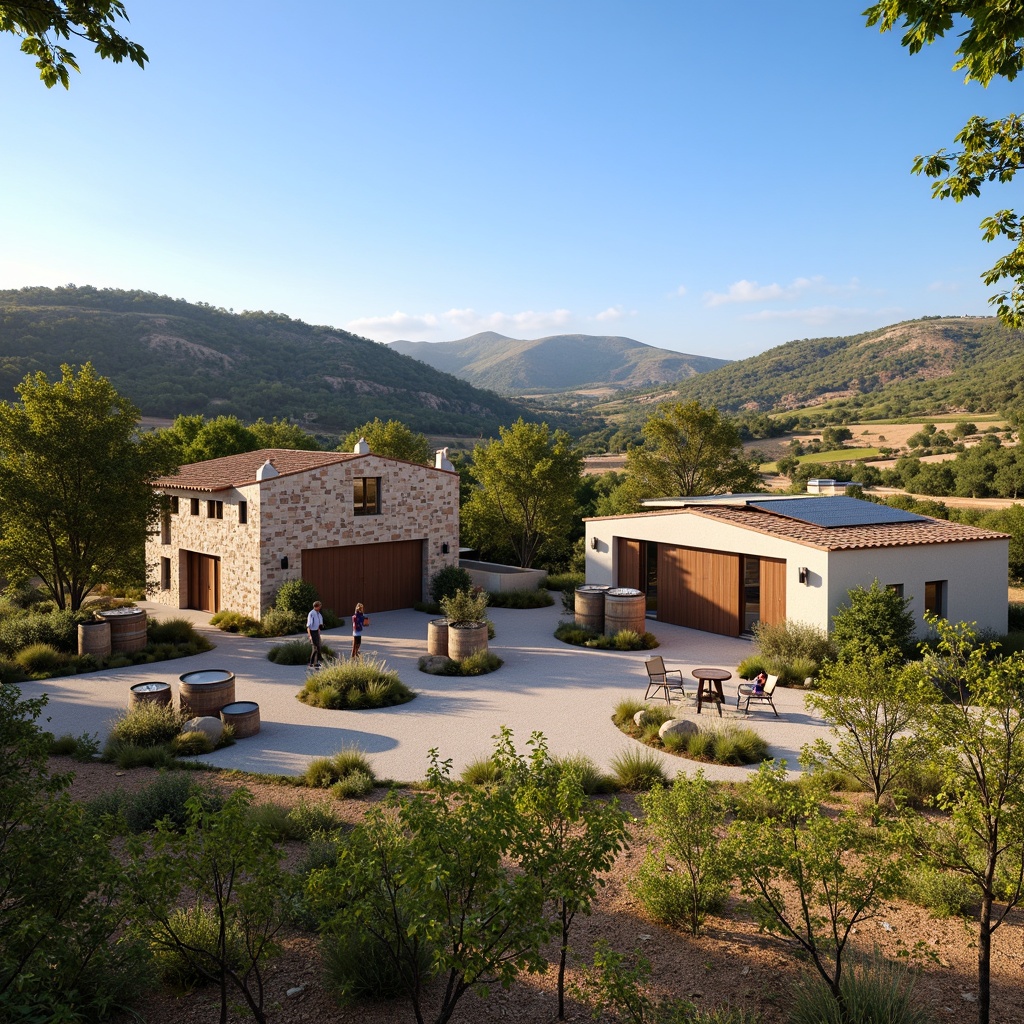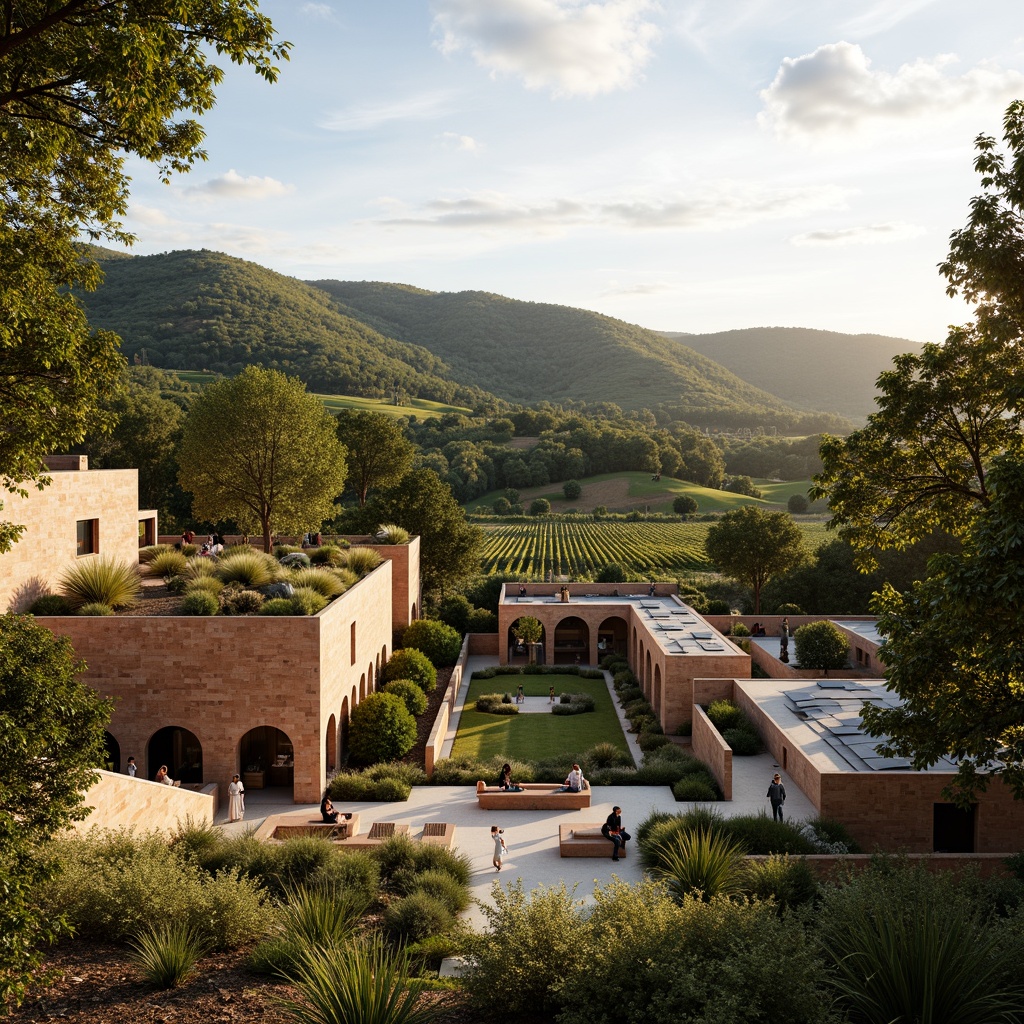Invite Friends and Get Free Coins for Both
Winery Regionalism Style Architecture Design Ideas
The Winery Regionalism style combines local tradition with modern architectural techniques to create stunning buildings that resonate with their environment. Utilizing local materials like Chukum and incorporating a light gray color palette, these designs emphasize sustainable practices while ensuring a seamless integration with the surrounding landscape. This style not only enhances the aesthetic appeal but also promotes environmental sustainability, making it a popular choice for contemporary architecture.
Local Materials in Winery Regionalism Architecture
Utilizing local materials is one of the hallmarks of Winery Regionalism architecture. By incorporating elements such as Chukum, these designs reflect the natural resources available in the region. This approach not only enhances the building's authenticity but also reduces the carbon footprint associated with transporting materials over long distances. The use of local materials fosters a deeper connection between the structure and its environment, creating a sense of place that resonates with both residents and visitors.
Prompt: Rustic winery, regional materials, earthy tones, natural stone walls, wooden barrels, grapevine trellises, terracotta roofing, Mediterranean-inspired architecture, arched windows, heavy wooden doors, vintage metalware, warm candle lighting, rich wood accents, stone flooring, cozy cellar atmosphere, soft golden lighting, shallow depth of field, 1/2 composition, realistic textures, ambient occlusion.
Prompt: Rustic winery, regional materials, weathered stone walls, wooden barrel accents, earthy tones, vineyard views, Mediterranean climate, warm sunlight, natural textures, reclaimed wood beams, wrought iron details, terracotta roof tiles, stucco finishes, arched windows, heavy timber doors, lush greenery, rolling hills, scenic vistas, soft warm lighting, shallow depth of field, 2/3 composition, realistic renderings.
Prompt: Rustic winery, Mediterranean climate, rolling vineyards, sun-kissed hills, local stone walls, earthy tones, wooden barrels, vintage wine-making equipment, natural ventilation, rustic metal gates, distressed wood doors, clay roof tiles, arched windows, soft warm lighting, shallow depth of field, 1/1 composition, intimate atmosphere, realistic textures, ambient occlusion.
Prompt: Rustic winery, regionalist architecture, earthy tones, natural stone walls, wooden barrels, vineyard surroundings, lush greenery, rolling hills, Mediterranean climate, warm sunny day, soft golden lighting, shallow depth of field, 3/4 composition, panoramic view, realistic textures, ambient occlusion, reclaimed wood accents, terracotta roof tiles, wrought iron decorations, earthy ceramics, stone pathways, rustic metal gates.
Prompt: Rustic winery, regional materials, natural stone walls, wooden barrels, earthy tones, vineyard surroundings, rolling hills, sun-kissed landscape, Mediterranean climate, warm afternoon light, soft shadows, rustic metal accents, reclaimed wood textures, earthenware pottery, woven wicker furniture, local craftsmanship, traditional architecture, terracotta roofing, stucco finishes, lush greenery, fragrant herbs, wine cellar atmosphere, dim warm lighting, 1/1 composition, shallow depth of field.
Prompt: Rustic winery, earthy tones, local stone walls, wooden beams, clay roof tiles, vineyard surroundings, rolling hills, lush greenery, Mediterranean climate, warm sunlight, soft natural lighting, large windows, wooden doors, traditional regional architecture, distressed wood accents, natural textiles, earth-toned ceramics, rustic metalwork, aged brick floors, wine barrel decorations, grapevine motifs, countryside views, distant mountain ranges, serene atmosphere, shallow depth of field, 2/3 composition, warm color palette.
Textural Contrast in Winery Regionalism Design
Textural contrast plays a crucial role in Winery Regionalism designs, offering visual interest and depth to architectural forms. By juxtaposing smooth surfaces with rough, natural textures, architects can create dynamic spaces that invite exploration. This contrast not only enhances the aesthetic appeal of the building but also serves practical purposes, such as improving durability and weather resistance. The interplay of textures can evoke a sense of harmony with the surrounding landscape, enriching the overall experience of the space.
Prompt: Rustic winery, stone walls, wooden barrels, vintage wine-making equipment, earthy tones, natural textures, regional architectural styles, Mediterranean-inspired design, curved lines, terracotta roofing, lush green vineyards, rolling hills, warm sunny day, soft golden lighting, shallow depth of field, 1/1 composition, realistic materials, ambient occlusion.
Prompt: Rustic winery, earthy tones, stone walls, wooden accents, vines crawling, wine barrels, oak casks, dimly lit cellars, warm golden lighting, soft focus, shallow depth of field, 2/3 composition, natural textures, ambient occlusion, rolling hills, Mediterranean landscape, sun-kissed terrain, olive groves, cypress trees, scenic vistas, panoramic views, elegant archways, ornate fountains, rustic pathways.
Prompt: Rustic winery, earthy tones, natural stone walls, wooden barrels, vineyard surroundings, lush greenery, rolling hills, Mediterranean climate, warm sunny day, soft golden lighting, shallow depth of field, 1/1 composition, realistic textures, ambient occlusion, distressed wood accents, wrought iron decorations, vintage wine-making equipment, terracotta tiles, earthenware pottery, natural fiber textiles, earthy color palette, organic forms, handcrafted details.
Prompt: Rustic winery, earthy tones, natural stone walls, wooden barrels, vineyard landscape, rolling hills, sunny afternoon, warm golden lighting, soft focus, shallow depth of field, 2/3 composition, rustic metal accents, reclaimed wood textures, earthy color palette, Mediterranean-inspired architecture, curved lines, ornate details, vintage winemaking equipment, lush greenery, blooming flowers, tranquil ambiance, soft shadows.
Landscape Integration in Winery Regionalism Architecture
Landscape integration is essential in Winery Regionalism architecture, ensuring that buildings harmonize with their natural surroundings. Architects often design structures that follow the contour of the land, minimizing disruption to the existing environment. This approach promotes biodiversity and preserves natural habitats, allowing the architecture to coexist peacefully with nature. By prioritizing landscape integration, these designs not only enhance visual appeal but also contribute to a sustainable ecosystem.
Prompt: Vineyard landscape, rolling hills, lush green vines, rustic stone walls, wooden wine barrels, wine cellar doors, grape harvesting equipment, farm-to-table restaurants, outdoor seating areas, pergolas, trellises, natural stonework, earthy color palette, Mediterranean-inspired architecture, curved lines, arches, bell towers, scenic overlooks, panoramic views, warm golden lighting, soft focus, 1/1 composition, realistic textures, ambient occlusion.
Prompt: Vineyard landscape, rolling hills, lush green vine rows, rustic winery buildings, earthy tone facades, wooden accents, natural stone walls, terracotta roofs, Mediterranean-style courtyards, ornate fountains, scenic overlooks, wine barrel decorations, vintage agricultural equipment, sun-kissed terrain, warm golden lighting, shallow depth of field, 1/2 composition, soft focus effect, realistic textures, ambient occlusion.
Prompt: Rolling hills, lush vineyards, rustic winery buildings, wooden barrels, grapevines, wine-making equipment, earthy tones, natural stone walls, curved lines, Mediterranean-inspired architecture, regionalist style, blended landscape, integrated design, seamless transition, outdoor seating areas, shaded pergolas, scenic views, misty mornings, warm sunlight, soft focus, 1/2 composition, atmospheric perspective, detailed textures.
Prompt: Rolling vineyards, lush green hills, rustic stone walls, wooden trellises, wine barrels, regional winery architecture, earthy tones, natural materials, curved lines, Mediterranean-inspired design, scenic overlooks, panoramic views, warm golden lighting, soft focus, 1/1 composition, ambient occlusion, realistic textures, tranquil atmosphere, leisurely ambiance, outdoor seating areas, shaded courtyards, native plant species, meandering pathways.
Prompt: Vineyard landscape, rolling hills, lush greenery, wine cellar, rustic stone buildings, wooden barrel decorations, grapevine trellises, sun-kissed terrain, warm afternoon light, soft focus, 1/1 composition, intimate atmosphere, natural textures, earthy tones, Mediterranean-inspired architecture, arched windows, clay roof tiles, outdoor seating areas, lantern lighting, scenic vistas, wine tasting rooms, fermentation tanks, rustic wood accents, earthy color palette, organic forms, serene ambiance.
Prompt: Rustic winery, rolling hills, vineyard rows, golden grapes, wooden barrels, stone walls, earthy tones, Mediterranean climate, warm sunny day, soft natural lighting, shallow depth of field, 3/4 composition, panoramic view, realistic textures, ambient occlusion, regionalist architecture, curved lines, earth-colored stucco, terra cotta roofs, ornate ironwork, lush greenery, olive trees, lavender fields, meandering paths, serene atmosphere.
Color Palette in Winery Regionalism Architecture
The color palette in Winery Regionalism architecture is thoughtfully chosen to complement the natural landscape. Light gray tones, often used in these designs, evoke a sense of tranquility and sophistication while blending seamlessly with the environment. This color choice not only reflects the local geological materials but also enhances the overall aesthetic of the building. By harmonizing with the surrounding hues, the architecture becomes an integral part of the landscape, creating a cohesive visual narrative.
Prompt: Rustic winery, earthy tones, terracotta rooftops, weathered stone walls, wooden barrels, vineyard landscapes, rolling hills, golden sunflowers, cypress trees, Mediterranean climate, warm beige stucco, distressed wood accents, ornate metalwork, lantern-style lighting, intimate courtyard spaces, soft warm illumination, 1/2 composition, symmetrical framing, natural textures, ambient atmosphere.
Prompt: Earthy winery, rustic stone walls, wooden barrel accents, vintage wine-making equipment, lush vineyards, rolling hills, warm sunset lighting, soft golden hour, natural stone floors, reclaimed wood ceilings, earthy color palette, terracotta tones, sienna reds, olive greens, weathered copper details, ornate metalwork, distressed finishes, rustic charm, cozy atmosphere, intimate gathering spaces, panoramic views of vineyards, 1/1 composition, warm soft focus, realistic textures.
Prompt: Earthy winery, rustic stone walls, wooden barrels, vineyard surroundings, rolling hills, Tuscany-inspired architecture, terracotta rooftops, weathered wood accents, earthy red floors, natural stone pathways, lush greenery, warm golden lighting, soft atmospheric effects, 1/1 composition, realistic textures, ambient occlusion, Mediterranean color palette, warm beige tones, rich burgundy hues, soft sage greens, creamy whites.
Prompt: Rustic winery, earthy tones, warm terracotta, soft sienna, muted greenery, weathered wood accents, natural stone walls, curved archways, traditional regionalist architecture, Mediterranean-inspired design, vineyard surroundings, rolling hills, scenic countryside views, warm golden lighting, soft focus, 1/2 composition, serene atmosphere, realistic textures, ambient occlusion.
Prompt: Rustic winery, earthy tones, warm beige walls, rich wooden accents, terracotta roofs, lush vineyards, rolling hills, sunny afternoon, soft golden lighting, shallow depth of field, 2/3 composition, rustic stone pathways, vintage metal doors, distressed wood textures, natural linen fabrics, earthy color palette, sienna red hues, moss greenery, weathered wooden beams, classic regionalism style, Mediterranean-inspired architecture.
Sustainable Design in Winery Regionalism Architecture
Sustainable design is a cornerstone of Winery Regionalism architecture, as it emphasizes environmental responsibility and resource efficiency. By utilizing local materials, optimizing energy use, and integrating the building with its landscape, these designs aim to minimize their ecological footprint. The focus on sustainability not only benefits the environment but also creates healthier living spaces for occupants. As the demand for eco-friendly architecture grows, Winery Regionalism stands out as a leading example of how to harmonize modern living with nature.
Prompt: Rustic winery, vineyard landscape, rolling hills, mature trees, weathered stone walls, earthy tones, wooden accents, natural ventilation, large windows, sliding glass doors, exposed beams, reclaimed wood flooring, wine barrel decorations, grapevine patterns, Mediterranean-inspired architecture, curved lines, soft warm lighting, shallow depth of field, 1/1 composition, realistic textures, ambient occlusion.
Prompt: Vineyard landscape, rolling hills, rustic charm, Mediterranean climate, warm sunny day, clear blue sky, traditional regional architecture, stone buildings, earthy tones, wooden accents, curved lines, rustic metal details, large oak barrels, wine cellar, fermentation tanks, grapevines, lush greenery, natural ventilation systems, solar panels, rainwater harvesting, grey water reuse, eco-friendly materials, reclaimed wood, living roofs, organic farms, local artisanal craftsmanship, earthy color palette, warm soft lighting, shallow depth of field, 3/4 composition, panoramic view, realistic textures, ambient occlusion.
Prompt: Rustic winery, vineyard landscape, rolling hills, Mediterranean climate, warm sunny day, earthy tones, natural stone walls, wooden beam ceilings, large oak barrels, wine cellar ambiance, reclaimed wood accents, living green roofs, solar panels, rainwater harvesting systems, eco-friendly materials, minimalist decor, industrial chic lighting, rustic metalwork, vintage wine-making equipment, scenic outdoor spaces, panoramic views, 1/1 composition, soft warm lighting, ambient occlusion.
Prompt: Rustic winery building, regionalist architecture, earthy tones, natural stone walls, wooden accents, vineyard surroundings, rolling hills, lush greenery, sunny afternoon, warm soft lighting, shallow depth of field, 3/4 composition, panoramic view, realistic textures, ambient occlusion, organic farming practices, solar panels, rainwater harvesting systems, recycled materials, low-carbon footprint, energy-efficient systems, living roofs, native plant species, scenic views, wine cellar interior, wooden barrels, vintage decor, earthy color palette.
Prompt: Vineyard landscape, rolling hills, lush green vines, rustic stone walls, wooden wine barrels, modern winery architecture, curved lines, earthy tones, natural materials, solar panels, rainwater harvesting systems, green roofs, living walls, recycled glass facades, eco-friendly insulation, organic farming practices, scenic views, warm sunny day, soft golden lighting, shallow depth of field, 2/3 composition, realistic textures, ambient occlusion.
Prompt: Rustic winery, rolling vineyards, lush green hills, Mediterranean climate, warm sunlight, natural stone walls, reclaimed wood accents, earthy tones, curved lines, organic forms, solar panels, rainwater harvesting systems, living roofs, eco-friendly materials, minimal waste design, efficient irrigation systems, shaded outdoor spaces, misting systems, scenic views, 3/4 composition, soft warm lighting, shallow depth of field, realistic textures, ambient occlusion.
Prompt: Vineyard landscape, rolling hills, lush greenery, wine barrels, rustic wooden accents, earthy tones, natural stone walls, curved lines, organic forms, eco-friendly materials, solar panels, rainwater harvesting systems, living roofs, native plant species, Mediterranean climate, warm sunny day, soft golden lighting, shallow depth of field, 2/3 composition, panoramic view, realistic textures, ambient occlusion.
Conclusion
In summary, Winery Regionalism architecture exemplifies the perfect blend of local materials, textural contrast, landscape integration, thoughtful color palettes, and sustainable design. These elements work together to create buildings that are not only visually stunning but also environmentally responsible. Whether situated on a beach or nestled in the countryside, this style of architecture is particularly adept at enhancing the natural beauty of its surroundings while providing functional and appealing spaces for habitation and enjoyment.
Want to quickly try winery design?
Let PromeAI help you quickly implement your designs!
Get Started For Free
Other related design ideas

Winery Regionalism Style Architecture Design Ideas

Winery Regionalism Style Architecture Design Ideas

Winery Regionalism Style Architecture Design Ideas

Winery Regionalism Style Architecture Design Ideas

Winery Regionalism Style Architecture Design Ideas

Winery Regionalism Style Architecture Design Ideas

